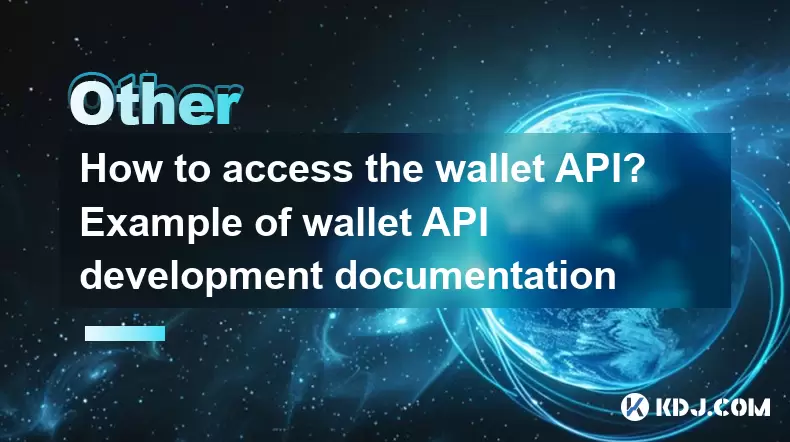-
 Bitcoin
Bitcoin $114500
-0.31% -
 Ethereum
Ethereum $3648
1.11% -
 XRP
XRP $3.033
-0.27% -
 Tether USDt
Tether USDt $0.9999
-0.01% -
 BNB
BNB $758.5
-0.32% -
 Solana
Solana $167.5
1.48% -
 USDC
USDC $0.9998
-0.02% -
 TRON
TRON $0.3331
0.74% -
 Dogecoin
Dogecoin $0.2039
0.25% -
 Cardano
Cardano $0.7419
-0.46% -
 Hyperliquid
Hyperliquid $39.21
2.66% -
 Stellar
Stellar $0.4049
-1.95% -
 Sui
Sui $3.483
-0.56% -
 Bitcoin Cash
Bitcoin Cash $570.8
2.89% -
 Chainlink
Chainlink $16.67
-0.57% -
 Hedera
Hedera $0.2470
-1.57% -
 Ethena USDe
Ethena USDe $1.001
0.00% -
 Avalanche
Avalanche $22.36
1.52% -
 Litecoin
Litecoin $123.4
4.35% -
 UNUS SED LEO
UNUS SED LEO $8.989
0.09% -
 Toncoin
Toncoin $3.324
-2.40% -
 Shiba Inu
Shiba Inu $0.00001219
-1.30% -
 Uniswap
Uniswap $9.811
2.54% -
 Polkadot
Polkadot $3.662
-0.07% -
 Monero
Monero $295.5
-3.85% -
 Dai
Dai $1.000
0.01% -
 Bitget Token
Bitget Token $4.345
0.24% -
 Cronos
Cronos $0.1380
0.95% -
 Pepe
Pepe $0.00001044
-1.14% -
 Ethena
Ethena $0.5981
-4.24%
How to access the wallet API? Example of wallet API development documentation
A Wallet API enables developers to interact with cryptocurrency wallets, allowing actions like checking balances, sending transactions, and querying history through programmatic access.
Jun 16, 2025 at 03:14 pm

What is a Wallet API?
A Wallet API serves as an interface that allows developers to interact with cryptocurrency wallets programmatically. It enables functionalities such as checking balances, sending transactions, and querying transaction history. To access a wallet API, users typically need authentication keys or tokens, depending on the wallet provider's security model. Understanding how to access and utilize this API is essential for integrating blockchain capabilities into applications.
How to Obtain API Access Credentials
Before interacting with a wallet API, you must obtain access credentials. Most providers require registration or account creation. Upon registration, you will usually receive an API key and a secret token, which are used for authentication during API requests. Some platforms may also support OAuth 2.0 for more secure and flexible access. It is crucial to store these credentials securely and avoid exposing them in client-side code or public repositories.
- Go to the wallet provider’s developer portal.
- Create an account or log in if already registered.
- Navigate to the API section and generate your API key and secret.
- Review the rate limits and usage policies associated with your plan.
Setting Up Your Development Environment
To begin working with a wallet API, ensure your development environment is properly configured. This includes installing necessary tools like Postman for testing API calls or using programming languages such as Node.js, Python, or Ruby for backend integration. You should also install any required libraries or SDKs provided by the wallet service.
- Install a programming language runtime (e.g., Node.js).
- Use package managers like npm or pip to install relevant libraries.
- Set up environment variables to securely store your API credentials.
- Configure SSL/TLS for secure communication when making API requests.
Making Your First API Request
Once your environment is set up, you can make your first API request. Most wallet APIs follow RESTful principles, meaning they use standard HTTP methods like GET, POST, PUT, and DELETE. For example, to retrieve the balance of a specific wallet address, you might send a GET request to a specific endpoint, including your API key in the headers for authentication.
- Choose the appropriate endpoint (e.g.,
/api/v1/wallet/balance). - Include your API key in the
Authorizationheader. - Format your request body correctly if sending data via POST.
- Handle JSON responses and error codes appropriately.
Handling Errors and Debugging
When working with APIs, encountering errors is inevitable. Wallet APIs typically return standard HTTP status codes along with descriptive messages. Common issues include invalid credentials, rate limiting, or malformed requests. To debug effectively, log all outgoing requests and incoming responses. Tools like Postman or curl can help inspect what is being sent and received.
- Check HTTP status codes (e.g., 401 Unauthorized, 400 Bad Request).
- Review response bodies for detailed error messages.
- Implement logging in your application to track failed requests.
- Use tools like Wireshark or Fiddler to monitor network traffic if needed.
Example: Querying Wallet Balance Using the API
Let’s walk through a practical example of retrieving a wallet balance using a hypothetical wallet API. Assume the base URL is https://wallet.example.com/api/v1, and the endpoint for balance is /wallet/{address}/balance.
- Construct the full URL:
https://wallet.example.com/api/v1/wallet/0x123...def/balance. - Set the
Authorizationheader toBearer YOUR_API_KEY. - Send a GET request using a tool like curl or a programming language library.
- Parse the returned JSON response to extract the balance value.
This example demonstrates the basic structure of a wallet API interaction, emphasizing the importance of proper formatting and authentication.
Frequently Asked Questions
What happens if I lose my API key?
If you lose your API key, most platforms allow you to regenerate it from your dashboard. However, regenerating the key will invalidate the old one, so update your applications accordingly.
Can I use the same API key across multiple projects?
It depends on the platform’s policy. Some services allow reuse, while others recommend generating separate keys for each project to enhance security and manageability.
Are there limitations on the number of API calls I can make?
Yes, most wallet APIs impose rate limits based on your subscription plan. Free tiers often have lower limits compared to premium plans.
How do I handle expired tokens or session timeouts?
Some wallet APIs issue short-lived tokens. If a token expires, you may need to re-authenticate or refresh the token using an OAuth flow or another designated method.
Disclaimer:info@kdj.com
The information provided is not trading advice. kdj.com does not assume any responsibility for any investments made based on the information provided in this article. Cryptocurrencies are highly volatile and it is highly recommended that you invest with caution after thorough research!
If you believe that the content used on this website infringes your copyright, please contact us immediately (info@kdj.com) and we will delete it promptly.
- Inveniam, MANTRA, and Real-World Assets: Forging a New DeFi Frontier
- 2025-08-05 22:30:12
- Cyprus Investor's $448K Crypto Loss: An Email Hack Wake-Up Call for Crypto Exchanges
- 2025-08-05 22:30:12
- Solana Memecoin Mania: Trader Profit Secrets Revealed!
- 2025-08-05 20:30:13
- POL Price Rebound: Will Consolidation Lead to a Breakout?
- 2025-08-05 20:30:13
- PEPE Price Downtrend: Expert Warning Signals More Drops Ahead?
- 2025-08-05 21:10:12
- Ethereum, Bitcoin, and Fractals: Decoding the Crypto Tea Leaves
- 2025-08-05 21:30:12
Related knowledge

What is the purpose of a nonce in mining?
Aug 04,2025 at 05:56pm
Understanding the Role of a Nonce in Cryptocurrency MiningIn the world of cryptocurrency mining, the term nonce stands for 'number used only once.' Th...

Can data on a blockchain be deleted?
Aug 05,2025 at 04:00am
Understanding Blockchain ImmutabilityThe core principle behind most blockchain systems is immutability, which means that once data is recorded onto th...

What is the difference between on-chain and off-chain transactions?
Aug 02,2025 at 04:22pm
Understanding On-Chain TransactionsOn-chain transactions refer to digital asset transfers that are recorded directly on a blockchain ledger. These tra...

How are blocks linked together?
Aug 04,2025 at 06:56am
Understanding the Structure of a BlockchainA blockchain is a decentralized digital ledger composed of a sequence of blocks, each containing a list of ...

Can a blockchain be hacked?
Aug 05,2025 at 08:29am
Understanding Blockchain Architecture and Security PrinciplesBlockchain technology is built on a decentralized and distributed ledger system that reco...

What is a node's role in a blockchain network?
Aug 03,2025 at 03:16pm
Understanding the Function of a Node in a Blockchain NetworkA node is a fundamental component of any blockchain network, acting as a participant that ...

What is the purpose of a nonce in mining?
Aug 04,2025 at 05:56pm
Understanding the Role of a Nonce in Cryptocurrency MiningIn the world of cryptocurrency mining, the term nonce stands for 'number used only once.' Th...

Can data on a blockchain be deleted?
Aug 05,2025 at 04:00am
Understanding Blockchain ImmutabilityThe core principle behind most blockchain systems is immutability, which means that once data is recorded onto th...

What is the difference between on-chain and off-chain transactions?
Aug 02,2025 at 04:22pm
Understanding On-Chain TransactionsOn-chain transactions refer to digital asset transfers that are recorded directly on a blockchain ledger. These tra...

How are blocks linked together?
Aug 04,2025 at 06:56am
Understanding the Structure of a BlockchainA blockchain is a decentralized digital ledger composed of a sequence of blocks, each containing a list of ...

Can a blockchain be hacked?
Aug 05,2025 at 08:29am
Understanding Blockchain Architecture and Security PrinciplesBlockchain technology is built on a decentralized and distributed ledger system that reco...

What is a node's role in a blockchain network?
Aug 03,2025 at 03:16pm
Understanding the Function of a Node in a Blockchain NetworkA node is a fundamental component of any blockchain network, acting as a participant that ...
See all articles

























































































